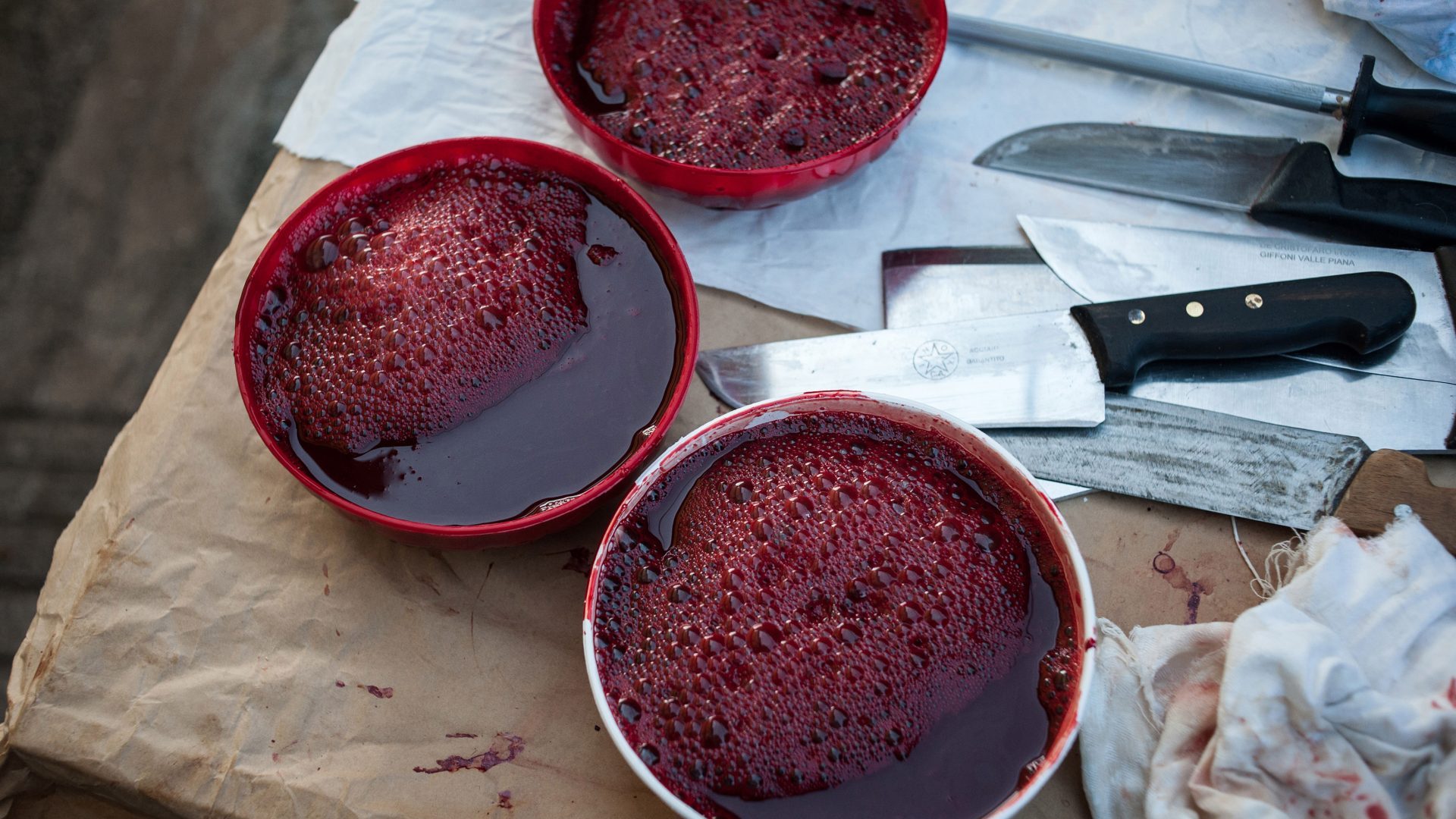I recently discovered places in Italy’s deep south where locals still practise “barbarian” eating rituals passed down by their ancestors. In wild Sardinia, Calabria, Puglia and Basilicata, gruesome traditions survive. For those who are squeamish, it can be nasty – you might not want to read on.
I had the chance to visit the rugged Barbagia mountain area in Sardinia where shepherds roam and bandits once took refuge. During holidays and occasionally on special weekends locals prepare Sardinia’s top dish – porceddu (little piglet) – the way cavemen used to.
The day I was there, they had started a bonfire in the middle of the piazza after butchering a piglet right there. The animal, still squealing, was hung upside down on a rope and left dangling for a few seconds. A butcher then slit open its throat with a thick knife. The blood gushed out from the neck like a fountain.
The animal’s screams were unbearable to hear. But what came next was even more disgusting. The blood was totally drained from the pig into a huge pot until not a single drop remained inside the animal.
It was then taken down and skewered with a long steel pole that went in from the mouth and out its rear end. The piglet was then placed on the bonfire and roasted for hours, as a man turned it round and round. Leaves of rosemary were passed over the dead animal. I felt like barfing.
A stout old man next to me, Pinna, who had fat greasy hands and smelled of pecorino sheep cheese, saw my bewilderment and shared a few secrets.
“The younger the piglet is, the sweeter and more tender its meat. The secret lies in killing it in the morning and roasting it only a few hours later, directly on the bonfire, no fridge or freezer. The meat is virgin this way.”
As the piglet roasted, a woman poured the animal’s own blood over it as it cooked, as if it were extra virgin olive oil or lemon juice.
“The blood will coagulate and turn into a crunchy, shiny outer layer – like honey – that cracks under your teeth when you bite into the porceddu”, said Pinna. I could see he was almost drooling.
When in the evening they offered me a slice of the roasted animal, I kindly declined.
I found out that this vampire-style taste for pig’s blood is found across Italy, where it is a key ingredient in traditional cakes and sausages.
On a recent trip to Puglia, in the middle of nowhere, I was invited by a friend to her grandma’s for lunch. Paolina lived alone in a huge masseria farmhouse with hens, pigs and goats running around.
At the end of a rich three-course meal I was treated to her speciality: a thick dark pudding called sanguinaccio made from chocolate and pig’s blood. Yes, you did read that correctly. I had to shut my brain off in order to take a bite. But the most shocking thing was how good it tasted.
“Today, you can taste sanguinaccio only in private homes; the use of pig blood in cuisine has long been banned for hygiene reasons. But as for my pigs, I know what they eat and have them regularly checked by the vet,” said Paolina.
When her pigs are butchered, Paolina has her loyal village butcher collect the blood and give it to her.
Paolina also makes a salty variant of sanguinaccio: salami with pig blood, which has a darker colour and is tastier than the ordinary salamis across Italy.
She prepares the sausages with pork blood mixed with beef or pork brain seasoned with salt and pepper, plus a bit of lard.
I couldn’t help but ponder how certain types of elemental food ritual stick in society, despite all the progress we’ve made and the achievements of human civilisation.
“I’m addicted to sanguinaccio pudding,” said Paolina. “Each morning for breakfast I spread it on a slice of grilled bruschetta bread.”
Silvia Marchetti is a freelance reporter based in Rome




